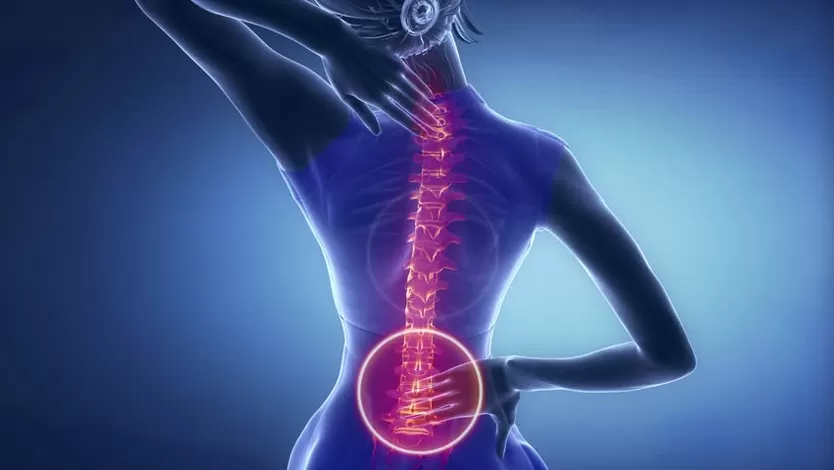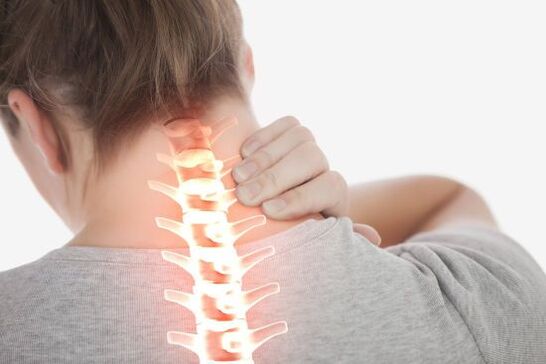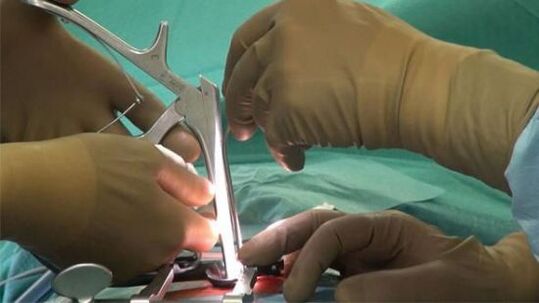
Osteochondrosis is a disease characterized by degenerative changes in the cartilage tissues of the spine. Lack of adequate therapy leads to disruption of the structure and dysfunction of the intervertebral discs, deformation of the spinal column. The following types of osteochondrosis are distinguished according to the location of the pathological process: cervix, chest, lumbar. As statistics show, this disease is observed in more than half of the world's population over the age of 35 years. The main reasons for its development are injuries, systematic uneven loads on the spine and legs.
what is
Speaking of what is osteochondrosis, it must be said that this disease itself causes a disruption of the tissue structure of the intervertebral discs, reduces their elasticity and changes their shape. At the same time, the distance between them decreases, which eventually leads to a loss of stability of the spine.
As a result of compression of the intervertebral space, the nerve endings coming out of the spinal cord are folded. This causes an increase in muscle tone and pain.
Decreased elasticity leads to the formation of intervertebral hernias and the development of protrusions (a disease in which the vertebrae begin to bulge into the spinal canal without rupture of the annulus fibrosis). And if the treatment is carried out incorrectly or does not exist at all, then it will lead to degradation of the spinal joints and ligament joints with the subsequent formation of osteophytes (bone processes).
The development of osteochondrosis leads to impaired motor functions. The person suffers from constant pain in the area of abnormal focus, which intensifies with flexion / extension of the spine. The probability of subluxation, spinal curvature is high.
Typically, the first symptoms of the disease in humans are manifested during the period of physiological aging of the organism. But there are situations when the pathology starts to develop earlier. And the reason for this is often the wrong lifestyle.
There is chondrosis in medicine and it has similar symptoms and etiology. What is the difference between chondrosis and osteochondrosis? მარტი is simple. Chondrosis is the initial stage in the development of osteochondrosis, when the replacement of damaged tissues with fibrosis and the formation of osteophytes has not yet begun in the spinal column. When there is a pronounced deformation of the spine and the formation of new processes, we are talking about osteochondrosis.
Provoking factors
What is chondrosis and osteochondrosis - find out. Now we need to talk about the reasons for their development. After all, if you do not eliminate them, treatment of the disease will not allow you to achieve positive dynamics. As mentioned at the beginning, the main reason for the onset of pathology is uneven loading of the spine. It can be provoked:
- Carrying heavy bags on one shoulder or one hand;
- Improper posture when sitting;
- Sleep on a soft mattress, on a high pillow;
- Wearing uncomfortable and anatomically incorrect shoes.
Osteochondrosis of the spine can also develop against the background of:
- Hypodynamics (accompanied by circulatory disorders, decreased muscle tone, shortness of breath);
- Passive lifestyle;
- Obesity;
- Injuries (fractures, sprains, bruises);
- Flat feet;
- Other degenerative diseases that cause poor circulation in the spinal column.
To highlight the causes of osteochondrosis of the spine, it should also be noted:
- Frequent physical stress;
- Neuro-emotional exhaustion;
- Metabolic disorders;
- Intoxication (narcotic, chemical);
- Pathology of the digestive tract;
- Genetic predisposition;
- Scoliosis;
- Hypovitaminosis;
- Pregnancy;
- smoke;
- Drinking alcohol;
- Prolonged / frequent dehydration.
There are many reasons for the development of spinal osteochondrosis. Most often, its occurrence occurs immediately under the influence of several factors (eg, trauma, passive lifestyle, smoking, prolonged stay in the wrong posture). It can be determined only by a thorough diagnosis, by studying the anamnesis.
Stages of development
Before we talk about what to do if chondrosis begins to develop, it is also necessary to say the stages of its development, because not only the severity of symptoms, but also the tactics of treatment directly depend on them. Total 4 degrees:
- The first stage. At this stage pathological processes occur in the pulp of the intervertebral disc nucleus. It is marked by dehydration (dehydration), which ultimately helps to reduce its height and the formation of cracks in the anulus fibrosus. There is no symptomatic picture at this stage of the disease. A person may feel only slight discomfort in the spinal area after intense physical exertion, being in an uncomfortable posture for a long time, and so on. Sh.
- The second stage. It is accompanied by a decrease in the interstitial space, a decrease in the muscles of the spine and ligaments. Such changes lead to increased spinal mobility. And any provocative factors can cause them to move or swim. As for the symptoms, at this stage patients are already experiencing spinal discomfort and pain that occurs during a certain type of exercise, pos.
- The third stage. Characterized by the appearance of prolapse and rash, subluxations, arthrosis of the intervertebral joints. At this stage the disease often causes stiffness of movements, a tingling sensation in the abnormal area, and numbness. Pain syndrome has a pronounced character, it occurs periodically even at rest, in the absence of heavy loads.
- Stage Four. At this stage, the body tries to get used to the disorders. His task is to do everything possible to improve the fixation of the spine. To do this, he begins to form osteophytes - bone formations that change the emptiness of the spinal column. However, in this way the organism not only helps itself but also harms itself. After all, osteophytes cause nerve strain, damaging a healthy spine. And this leads to the development of fibrous ankylosis in the joints and intervertebral discs (an increase in the volume of fibrous tissue by its simultaneous fusion with cartilage debris). If a person has both microtrauma and disorder, then the severity of the pain syndrome increases. In their absence, the clinical picture disappears.
Symptoms
When talking about what osteochondrosis is and how to get rid of it, we can not help but talk about the symptoms with which it can manifest. The main sign of its development is the presence of discomfort or pain in the neck, chest and lumbar region. The severity of the sensations directly depends on the degree of development of the disease.
Visual examination of the patient reveals a curvature of the spine in the transverse or longitudinal plane. Most often they are observed on the lower back or neck, less often on the chest.
If we talk about the patient's feelings, then among them are periodic or constant fatigue in the spinal area, as well as pain, which can be faded and expressed, depending on the severity of pathological processes. It can be localized:
- Neck,
- Shoulder girdle;
- Breasts;
- In the lumbar region;
- Perineum.
In this case, the strength of the movement is possible, which makes it difficult to perform household duties. It most often occurs in the upper extremities. Other signs may be added to the symptomatic picture. It all depends on the location of the focus, its severity and the characteristics of the organism. If the patient has disc movement, protrusion, hernia, osteophytes, then it often leads to circulatory disorders, spinal canal dysfunction, edema, fibrosis, stretching. All of this leads to symptoms that can complicate the diagnosis and lead to misdiagnosis.
When talking about how osteochondrosis manifests itself, it is necessary to highlight the most common symptoms that patients complain of. ᲔYour include:
- Pain in the neck, waist, shoulder girdle, ribs;
- Firmness of movements, discomfort after waking up in the morning, bending, turning;
- Numbness in the arms, legs, neck;
- Discomfort in the joints and spinal muscles;
- Frequent dizziness, migraine;
- Rapid fatigue;
- Heartache;
- Impaired sensitivity of the upper extremities;
- Decreased muscle tone.
Signs of osteochondrosis directly depend on the location of the abnormal focus:
- Cervical section. In this case the pain is localized in the neck, arms, shoulder girdle. It can give shoulder blades and shoulders. Osteochondrosis of the cervix can also be manifested by headaches, ringing in the ears, "goose bumps" in front of the eyes, and dizziness.
- Chest section. With this pathology, pain occurs in the chest area. Can give the upper shoulder, arms. It often causes discomfort and pain in the heart area. It can cause respiratory failure, shortness of breath.
- Lumbosacral region. Pain syndrome predominates in the lumbar region. It is also manifested as discomfort in the legs, thighs and pelvic organs. Often provokes sexual dysfunction.

Any spinal discomfort is a serious reason to visit a doctor.
The presence of signs such as spinal fatigue, pain, may also indicate not only the onset of this disease, but also the addition of other diseases that have nothing to do with dystrophic changes of the intervertebral discs. A diagnosis of osteochondrosis or chondrosis can be made only after a thorough diagnosis by an experienced physician.
Diagnosis
We talked about what causes osteochondrosis and how it can be detected. But it must be said that making a correct diagnosis based only on visual examination and the patient's own feelings is not helpful. To do this, you must undergo a thorough examination, which must include:
- X-ray of the cervix, chest or lumbar spine (depending on the area of discomfort);
- Myelography;
- Neurological examination of sensitivity, reflexes.
As additional diagnostic methods are used:
- CT;
- MRI;
- NMR.
To rule out the presence of inflammatory or infectious diseases, laboratory tests are also prescribed:
- OAM;
- UAC;
- Blood chemistry.
If necessary, consultation with narrow profile specialists is appointed.
Treatment methods
Unlike chondrosis, osteochondrosis in the ridge area is a chronic process that cannot be eliminated by conservative methods. But that does not mean there is no need to fight it. Lack of adequate therapy can lead to serious consequences - the spine is deformed, fibrous tissue appears in the place of bone structures, which fails to perform the necessary functions, the person becomes disabled.
Conservative therapy
What to do with osteochondrosis, the doctor will tell you. The following methods are usually used for such diseases:
- Drug therapy. In this case, medications are used to relieve painful sensations, relieve inflammation, and restore metabolism. If the patient has severe pain, medical blockade is used, which, in addition to the analgesic effect, helps to reduce the severity of the musculoskeletal syndrome. The following types of blockades are used in osteochondrosis: blockade of the trigger points, intraosseous, aspect, paravertebral, epidural.
- Physiotherapeutic activities. They are also used to reduce pain and improve the effectiveness of medications. Ultrasound therapy, magnetic fields, low frequency currents, laser beams, etc. are most often used in osteochondrosis. Sh.
- Physiotherapy and kinesitherapy. Exercise therapy is prescribed to all patients, without exception. It is conducted under the supervision of specialists. Provides posture correction, increase muscle tone, nervous tension. Systematic performance of special exercises also helps to increase the gaps between the discs, distributing a uniform load on the muscular system.
- ᲛMassage. Manual massage helps to normalize blood circulation, relieve muscle spasms and clamps. If the patient has disorders of the nervous system, hydromassage is prescribed.
- Manual therapy. It will be selected individually for each patient. Provides normalization of lymphatic drainage, blood circulation, metabolism, mobility of the spine. Prevents the development of complications, strengthens the immune system.
- Spine traction. This method involves stretching the spine using special equipment. Thus, it is possible to achieve growth of the intervertebral space and reduce the incidence of osteochondrosis.
Surgical treatment
If conservative treatment does not help to eliminate the signs of osteochondrosis and does not give any positive dynamics at all, surgical intervention is applied. Instructions about it are:
- cauda equina syndrome, which develops in the presence of a massive hernia;
- Spinal canal stenosis with compression of the brain and neurovascular bundles;
- Combination of osteochondrosis with significant spondylolisthesis with severe segment instability;
- Root compression at the L5 level of the lumbar segment;
- Osteochondrosis of the cervix, which occurs with discogenic syndrome of the vertebral arteries.

Surgical treatment of osteochondrosis can be done in several ways:
- Laminotomy. This type of surgery involves the removal of a fragment of bone structure and a yellow ligament.
- Laminectomy. During it most of the spine that restricts the spinal canal is removed.
- Foraminotomy. The purpose of the operation is to widen the radical canal.
- Dysketomy. Partial or complete removal of the intervertebral disc is performed during this operation.
- Laser evaporation of the disc nucleus. It is held with the participation of a special LED, which provides partial destruction of the disc, leading to the reverse development of the hernia.
Only a doctor will decide how to get rid of osteochondrosis. It is necessary to understand that each case is individual and the choice of this or that method of surgical intervention depends on the location of the pathology, its severity, the patient has other diseases.
Traditional methods
You can treat spine disease at home. But this should be done only in cases where there are still symptoms of chondrosis (early stages of disease development) and after prior consultation with your doctor.
When talking about what helps chondrosis, the following alternative medicine recipes should be mentioned:
- You need to take 1 kg of coarse salt, mix it with 3 s. K. L. Dry mustard, add 100 ml of water, mix everything thoroughly. The resulting gruel should stand on low heat and preheat to 50 degrees. The mixture is applied to the sore spot, a film is placed on top, then a warm handkerchief. With such a compress the patient needs to lie down until it has cooled completely. After the procedure it is necessary to stay warm for another 2 hours.
- Pour 1. 5 liters of water into the pot, add 3 handfuls of sawdust and bring the mixture to a boil, then strain it. The sawdust is placed on a plastic sheath that was previously covered with a sheet of bedding. The sawdust is tossed with a gauze towel on top, then stood on top and covered with a warm blanket. Thus, start for 30 to 40 minutes.
- Take 200 g of zinc roots, 100 g of potentilla, 100 g of elecampane. The herbs are placed in a 3-liter jar filled with vodka. The resulting composition is placed in a dark place for 3 weeks, then filtered. Take 3 times daily before meals, 1 tbsp. K. L. Throughout the month. Then take a break for 10 days and repeat the course.
Osteochondrosis is difficult to treat. It is difficult to respond to conservative methods of therapy. But if you combine them with proper nutrition, home treatment, exercise therapy and all the recommendations of the doctor, then the patient has every chance to get rid of the pain that afflicts him and prevent the development of complications.

















































